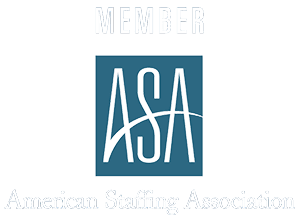Worker classification shapes how your staffing firm manages worker entitlements and responsibilities – it’s that important. As businesses move toward flexible work arrangements, staffing firms need to understand the key differences between independent contractors and employees. With the complexity of employment regulations, it is only right to understand whether workers are independent contractors or employees.
Improper classification affects your finances and your staffing firm’s standing in the industry. These issues can strain client relationships and reduce your agency’s profits. With remote and flexible work becoming more common, staying on top of classification guidelines is key to running a successful operation.
What does proper worker classification look like, and how can you keep your staffing firm compliant? Let’s explore these important questions.
Understanding Worker Classifications
The primary difference between employees and independent contractors revolves around control over work. Employees placed through staffing firms typically follow the client company’s schedule, utilize company tools, and receive specific training and instructions.
In contrast, independent contractors enjoy greater autonomy in how they complete their work though the IRS evaluates multiple factors to determine their proper classification
Classifying workers can be particularly challenging for staffing firms, especially with project-based work, short-term contracts, or specialized roles. Take holiday retail staffing; deciding whether a temporary worker should be classified as an employee or a contractor requires careful consideration of their actual working conditions and the level of control exerted by the employer.
Employees are entitled to certain rights and benefits that independent contractors do not receive. These include minimum wage, overtime pay, unemployment insurance, and workers’ compensation. Additionally, many employees have access to benefits such as healthcare and paid time off. Conversely, independent contractors are responsible for their taxes and benefits.
Read More: 1099 vs. W-2: Are You Classifying Your Contractors Correctly?
What happens when workers are misclassified?
Employee misclassification is more than a paperwork error; it affects your staffing agency’s finances, operations, and relationships with clients and workers. Let’s break down what this means for your business:
Financial Impact
Worker misclassification can be costly for organizations. For instance, Holland Services, an oil and gas staffing company, faced nearly $43 million in fines after misclassifying over 700 workers as independent contractors to avoid paying overtime.¹
When misclassified, workers may seek back pay for wages and benefits they were denied. Companies could also incur additional costs from legal fees and settlements, especially if multiple workers are affected. The risk of audits from regulatory agencies like the IRS or the Department of Labor can further complicate matters, leading to potential penalties for unpaid taxes and benefits.
Operational Consequences
The operational impact of misclassification issues can be equally disruptive, creating challenges that affect the smooth running of your firm. In addition, the workers that are misclassified may feel undervalued or unfairly treated, leading to their morale being dropped.
Dealing with a misclassification audit or lawsuit can divert significant time and resources away from your operations, leading to delays when completing projects. The extra scrutiny from audits and regulatory bodies may require staff to focus on compliance rather than their usual tasks.
Client and Market Trust
Misclassification concerns can affect your relationships with clients who prioritize compliance in their staffing partnerships. Some clients may prefer to work with agencies that have strong classification practices to protect their own interests. Plus, maintaining accurate worker classification helps you attract quality candidates who value clear, professional working relationships.
Building a Solid Classification System
With how complex it is to classify workers; you need a solid system to avoid misclassification. To create a foolproof classification process, you need to implement an assessment framework to accurately classify workers, use compliance tools, monitor risk and put corrective measures in place. Here’s how you can do that:
Assessment Framework
To classify workers correctly, you need to have a clear assessment system that follows labor laws and industry standards. Doing so will ensure that your classification efforts are compliant and consistent. You can use a checklist with the below factors to determine if a worker is an employee or an independent contractor
- Control over Work: Determine the level of control on how, when and where they perform their duties. Independent contractors have a significant control over how they do their job, while employees are subject to the control of their employer.
- Nature of Work: Independent contractors usually provide support for specific, project-based tasks outside the company’s primary business, while an employee’s role is necessary for daily business functions.
- Financial Relationship: Consider whether the worker is reimbursed for expenses, receives a regular salary, or provides their own tools and resources. Contractors usually handle their own expenses and are paid per project, while employees have more consistent financial arrangements, including benefits and tax withholdings.
- Duration and Exclusivity: Consider the assignment length and work arrangements. Long-term placements with a single client focus often indicate an employment relationship. Independent contractors generally work on short-term contracts and may have multiple clients.²
Make sure you use the checklist with federal, state and industry guidelines to ensure that each classification is carefully considered.
Read More: Navigating Employment Classifications: How to Distinguish Between Employees and Subcontractors
Compliance Tools & Technology
To manage your workers’ classification, you can subscribe to labor law updates to stay on top of regulations that affect worker classification and to reduce human error leading to worker misclassification.
Risk Monitoring
With classification in place, you need to regularly check that you remain compliant. Regular worker classification audits will allow you to identify and correct potential issues. To do this, you can use the following:
Internal Audits
You can conduct quarterly or biannual internal audits to help you verify that all workers are correctly classified and that no updates in employment law have affected existing classifications. Remember to seek counsel from legal professionals when conducting these audits.
Regular Training for Hiring Managers
Regularly train recruiters, HR staff and hiring managers on classification issues as they are directly involved in workers classification. This would help you prevent misclassification by noting any issues during the hiring and onboarding stage.
Feedback Loops
Create a feedback mechanism, like anonymous surveys for independent contractors and employees to help detect potential misclassification. Workers can also express concerns or confusion regarding their classification status, offering early warning signs of possible issues.
Corrective Procedures
Sometimes, classification errors can happen. So, how can you address them effectively and reduce any negative consequences?
Review and reclassify any worker that has been misclassified immediately. Speak with your legal counsel to assist in this review and ensure the new classification is compliant. It’s also important to document all findings and any actions taken to create a record for future audits.
Compensate anyone affected retroactively. Calculate any back wage, benefit or tax contributions owed and refund promptly. This will help build trust with the worker and show your commitment to compliance.
Check your processes to know where to improve. Identify gaps in your initial process and plug them in to prevent future misclassifications. You can either add extra checkpoints or revise your assessment framework based on lessons learned. Regularly updating your classification procedures in line with new regulations and industry best practices will help keep your agency compliant.
Stay ahead of workers classification with a bulletproof approach
Misclassifying workers exposes you to financial penalties, legal costs, business disruptions and reputational damage. As we’ve seen, investing in a good classification system—built on clear assessment criteria, compliance tools, proactive monitoring, and corrective procedures can protect your staffing firm from costly errors while maintaining a compliant and resilient workforce.
What are you waiting for? Now is the time to take steps to protect your agency. Signature Back Office Solutions can review your worker’s classification strategies and help you create a system that guards against workers’ misclassification. Reach out to us now!
References
- Independent Contractor (Self-employed) or Employee? | Internal Revenue Service. www.irs.gov/businesses/small-businesses-self-employed/independent-contractor-self-employed-or-employee.
- “News Release.” DOL, www.dol.gov/newsroom/releases/whd/whd20211001.





